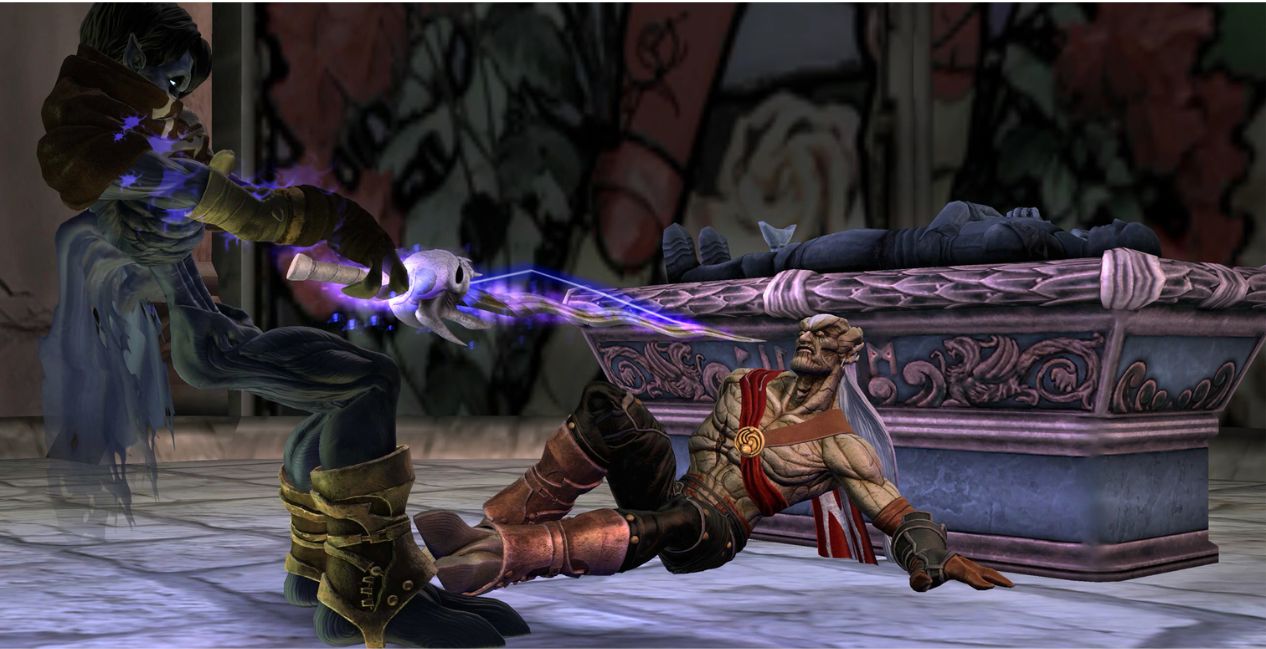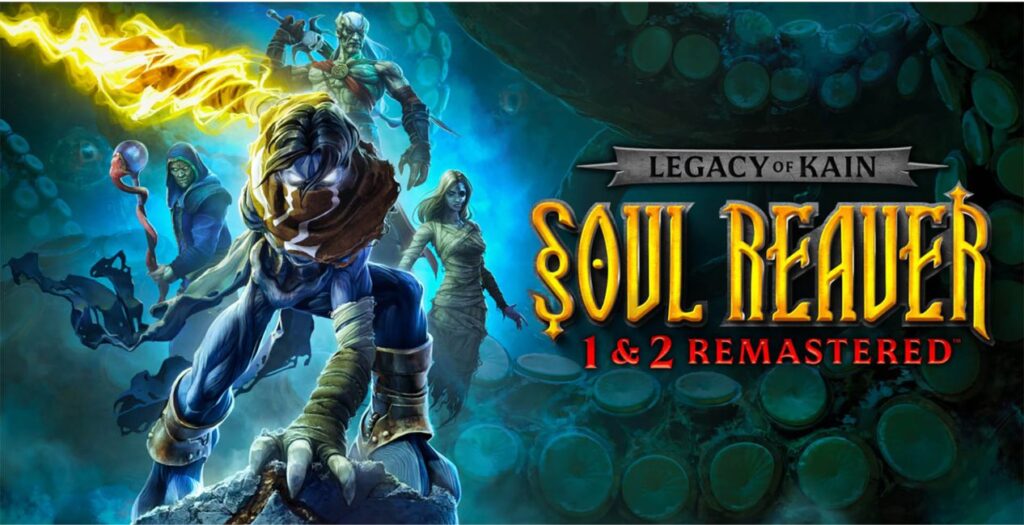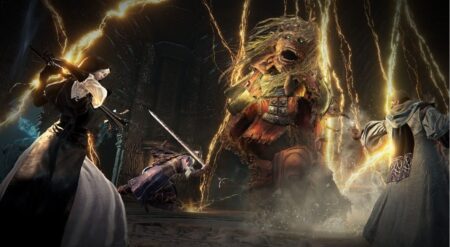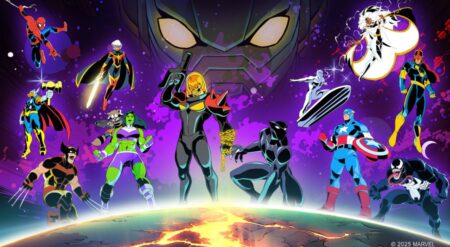The Legacy of Kain is one of the oldest and most recognized series in gaming history, and it earned its acclaim for how astonishing it is in many ways. However, as the series has been going well for over two decades, it can be difficult for new players to immerse themselves in it. Thankfully, after all these years, Aspyr has decided to rework two of the franchise’s most popular games, Legacy of Kain: Soul Reaver 1 and 2 Remastered. The remaster adds several notable and well-needed updates, but some aspects still make the game show its age.
Legacy of Kain: Soul Reaver 1, developed by Crystal Dynamics and published by Eidos Interactive, was launched in 1999. The game follows Raziel, an elite member of his master Kain’s vampire army. One faithful day, Raziel surpasses Kain in evolution, and Kain responds to this by stripping him of his rank and throwing him into an abyss in an attempt to kill him. Countless years later, Raziel is resurrected by the Elder God, who turns him into a soul-devouring wraith. He then journeys to seek vengeance on Kain and his vampire brethren.
Soul Reaver 1 features a simple but interesting concept of a character seeking revenge and doing anything to achieve it at all costs. Kain starts as a simple character who’s only motivated by vengeance. However, as Legacy of Kain: Soul Reaver 1 and 2 Remastered progresses, he learns more about his origins, the world, and, by extension, Kain and his past deeds, which shape his actions later in the game and series. Soul Reaver 1 is one of the few games of its time that showcased a genuinely excellent narrative. While its sequel features better storytelling in many ways, Soul Reaver 1 features an enjoyable story regardless.
As a remaster, players first notice the newly upgraded visuals in Legacy of Kain: Soul Reaver 1 and 2 Remastered, improving the backgrounds, characters, and object models. While the models get an impressive and noticeable boost in quality, the lighting, vibrancy, and backgrounds are noticeably lacking in comparison. Despite this, it is still a remarkable boost in many ways. Unfortunately, the remaster doesn’t feature any graphic settings options, so players won’t be able to tweak image quality or any major game settings, which is a shame.
Legacy of Kain: Soul Reaver 1 and 2 Remastered reinvigorates a gaming pillar.

The gameplay in Soul Reaver 1 primarily includes puzzle-solving and exploration mechanics. The world is divided between two realms: the Material and the Spectral. The Material Realm is the standard world full of physical obstacles, while the Spectral Realm shows a ghostly mirror of the same spaces but with its own unique challenges. This duality is used for puzzle-solving and combat, with players having to shift between the realms to progress. The ability to traverse between these two worlds is an interesting mechanic, with some areas only accessible in one form or the other, making exploration feel like an essential part of the experience.
Sadly, combat is not the most substantial aspect of Soul Reaver 1. Raziel’s sword, the Soul Reaver, grows in power throughout the game, and the player can unlock new combat abilities as the story unfolds. While satisfying to use at times, combat can feel repetitive, significantly, as enemies don’t vary much in terms of behavior and tactics due to the older AI. The lack of a strong combo system or advanced fighting mechanics means the combat feels somewhat simplistic compared to later action titles.
Despite this, Legacy of Kain: Soul Reaver 1 and 2 Remastered pacing and exploration make up for the weaker combat. The world is vast, and as players unlock new abilities, previously inaccessible areas open up, adding a layer of progression and rewarding exploration. However, Legacy of Kain: Soul Reaver 1 and 2 Remastered does suffer from some tedious backtracking, which, while not uncommon in the genre, can occasionally feel monotonous. Moreover, traversing areas in the first game can be debilitating even in the remaster. This is due to the poor lighting, bland colors, and some dated, samey level design that sometimes makes moving from place to place feel arduous.
Soul Rever 2 pulls the remaster into focus and pays off.

Soul Reaver 2, on the other hand, was released in 2001 and picked up immediately after the events of its predecessor. It continues the saga of Raziel and his search for vengeance against Kain. The sequel refines and expands upon the elements that made the first game a standout.
It shifts from a quest for revenge to a more philosophical exploration of time, fate, and free will. The need for vengeance still drives Raziel, but his journey becomes more intertwined with the mysterious nature and history of Nosgoth and the ancient forces that shape its history.
Legacy of Kain: Soul Reaver 1 and 2 Remastered also introduces more backstory regarding Kain, the Elder God, and more about Nosgoth’s timeline. Raziel uncovers his origins and his connection to Kain through time travel. This narrative depth significantly improved over the first game, making Soul Reaver 2 feel less like a straightforward revenge story and more like a grand, intricate tale about our protagonist and the world he inhabits.
All of this makes the sequel more impressive narratively. In terms of visuals, the sequel features better models and lighting, and Legacy of Kain: Soul Reaver 1 and 2 Remastered improves it in a very appealing way without losing its gothic, melancholic touch.
Soul Reaver 2 also refines gameplay by introducing more fluid combo-based fighting mechanics and more varied enemy encounters. Raziel gains new powers, such as possessing enemies and adding another layer of strategy to combat and puzzle-solving.
The addition of time manipulation mechanics allows players to move between past and present versions of several levels, making exploration even more engaging. Introducing new powers, such as shifting in and out of time, provides a layer of complexity to puzzle-solving. Traversal in Soul Reaver 2 is much better than the previous entry, but it still has moments where moving between locations is unnecessarily complicated.
Some things in the Legacy of Kain remaster feel complicated for the sake of being so.

Other than that, the soundtrack for Legacy of Kain: Soul Reaver 1 and 2 Remastered is impeccable and hauntingly immersive. The melancholic melodies perfectly complement the oppressive world of Nosgoth. The voice cast also does a fantastic job in both games, especially Raziel’s voice actor, and the voice acting is a high point of the games.
Performance-wise, Legacy of Kain: Soul Reaver 1 and 2 Remastered runs excellently on PC with no frame rate dips or performance issues. However, it’s worth noting that the game crashed on one occasion, and as a result, I lost my Soul Reaver 1 save data, which was a painful experience. Other than that, no other issues were encountered.
Legacy of Kain: Soul Reaver 1 and 2 Remastered features a bountiful amount of bonus content. This includes several behind-the-scenes videos and outtakes, demo videos, concept art, fan art and images, and most notably, several playable lost levels with descriptions not included in the original games. The lost levels, while incomplete, show a glimpse of some exciting levels.
Overall, Legacy of Kain: Soul Reaver 1 and 2 Remastered is an impeccable remaster collection. While it has a few flaws, the narrative, world-building, soundtrack, and voice acting make the games a gratifying experience.
Legacy of Kain: Soul Reaver 1 and 2 Remastered is available now for PlayStation 5, PlayStation 4, Xbox Series X/S, Nintendo Switch, and PC via Steam.
Legacy of Kain: Soul Reaver 1 and 2 Remastered
-
Rating - 8/108/10
TL;DR
Legacy of Kain: Soul Reaver 1 and 2 Remastered is an impeccable remaster collection. While it has a few flaws, the narrative, world-building, soundtrack, and voice acting make the games a gratifying experience.








